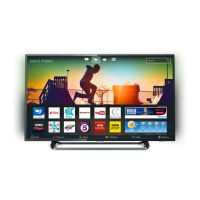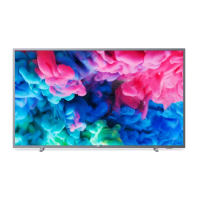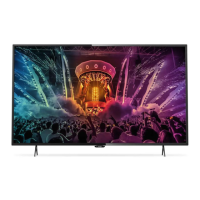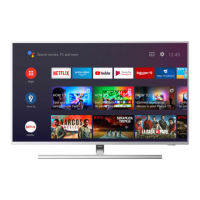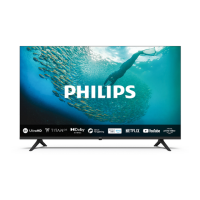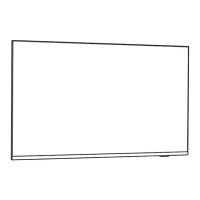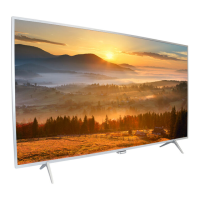
Do you have a question about the Philips 43PUS6401 and is the answer not in the manual?
| Product color | Aluminum |
|---|---|
| Mercury content | 0 mg |
| Panel mounting interface | 200 x 200 mm |
| 3D | - |
| User memory | 8 GB |
| Refurbished grade | Grade A |
| Google applications | Google Play |
| Ambient lighting type | 2-sided |
| Annual energy consumption | 98 kWh |
| Desktop stand | No |
| Cables included | AC |
| Screen shape | Flat |
| Response time | - ms |
| Display diagonal | 43 \ |
| Display brightness | 350 cd/m² |
| Display technology | LED |
| Native aspect ratio | 16:9 |
| Peak luminance ratio | 65 % |
| Display diagonal (metric) | 108 cm |
| RF ports quantity | 2 |
| HDMI ports quantity | 4 |
| USB 2.0 ports quantity | 3 |
| Ethernet LAN (RJ-45) ports | 1 |
| Consumer Electronics Control (CEC) | EasyLink |
| Tuner type | Analog & digital |
| Analog signal format system | NTSC, PAL, SECAM |
| Digital signal format system | DVB-C, DVB-S, DVB-S2, DVB-T, DVB-T2, DVB-T2 HD |
| Video apps | YouTube |
| Operating system version | 6.0 (Marshmallow) |
| Operating system installed | Android |
| Programming period | 8 day(s) |
| Firmware upgradeable via | Auto upgrade wizard, Network, USB |
| Audio decoders | DTS Premium Sound |
| RMS rated power | 20 W |
| AC input voltage | 220 - 240 V |
| AC input frequency | 50 - 60 Hz |
| Power consumption (standby) | 0.3 W |
| Power consumption (typical) | 67 W |
| Wi-Fi standards | Wi-Fi 4 (802.11n) |
| Operating temperature (T-T) | 5 - 35 °C |
| Teletext standards | Hyper-text |
| Audio formats supported | AAC, MP3, WAV, WMA |
| Image formats supported | JPEG |
| Video formats supported | AVI, H.264, HEVC, MKV, MPEG4, VC-1, WMV9 |
| Subtitle formats supported | SMI, SRT, SUB, TXT |
| Picture processing technology | Philips Pixel Plus Ultra HD |
| Package type | Box |
| Package depth | 133 mm |
| Package width | 1054 mm |
| Package height | 669 mm |
| Package weight | 12300 g |
| Depth (with stand) | 204 mm |
|---|---|
| Height (with stand) | 623 mm |
| Weight (with stand) | 9700 g |
| Depth (without stand) | 77 mm |
| Width (without stand) | 968 mm |
| Height (without stand) | 576 mm |
| Weight (without stand) | 9400 g |
Describes the new engine for Smart TV apps with improved look and performance.
Emphasizes reading safety instructions before using the TV.
Provides instructions for TV stand mounting and VESA wall mounting.
Details the function of each key on the TV remote control.
Explains how to use voice search with an Android smartphone or tablet.
Explains how to switch the TV on, to standby, or disconnect power.
Guides through the process of installing satellite channels and configuring settings.
Covers manual installation of channels via antenna or cable.
Details how to update or reinstall digital channels and manage automatic updates.
A guide to connecting various devices to the TV for optimal quality.
Details on HDMI port quality, copy protection, and ARC functionality.
Connecting mobile devices via MHL for screen sharing and charging.
Using EasyLink for device control via the TV remote.
Using a CAM module with a smart card for premium TV channels.
Connecting a set-top box (digital receiver) to the TV.
Connecting a Home Theatre System via HDMI ARC or standard HDMI.
Connecting smartphones and tablets wirelessly or via MHL.
Connecting Bluetooth devices like speakers and gamepads to the TV.
Connecting game consoles via HDMI, YPbPr, or SCART.
Connecting a computer to use the TV as a PC monitor.
Guide to connecting the TV to a network and the internet wirelessly or wired.
Steps for establishing a wired network connection to the TV.
Viewing network settings and configuring static IP addressing.
Signing into Google Account for enhanced TV features.
Accessing and installing apps from the Philips App Gallery.
Overview of installed apps and their functions on the TV.
Using Google Play for movies, TV shows, music, and games.
Instructions for downloading and installing new apps from the Google Play Store.
Locking apps for children by setting PIN codes or restricted profiles.
Managing installed apps, including force stopping, clearing cache, and uninstalling.
Checking TV storage usage and freeing up space.
Instructions for launching and using the TV's internet browser.
How to switch between connected devices and sources on the TV.
Setting the TV to ideal display settings when connected to a computer.
Accessing commonly used settings quickly via the Frequent Settings menu.
Adjusting picture styles, color, contrast, sharpness, and other visual settings.
Fine-tuning color enhancement and temperature for picture quality.
Adjusting sound styles, bass, treble, and headphone volume.
Detailed sound adjustments including Bass, Treble, and Headphone Volume.
Configuring Ambilight behavior, brightness, and color styles.
Setting Ambilight to follow video, audio, color, or app content.
Integrating Philips Hue bulbs with Ambilight for synchronized lighting effects.
Adjusting energy-saving features like Eco mode and screen-off timer.
Setting the TV to optimize energy consumption.
General TV configurations including USB drive setup and keyboard settings.
Setting up and formatting a USB Hard Drive for TV use.
Managing and disabling EasyLink features for connected devices.
Enabling accessibility features for users with hearing or visual impairments.
Setting parental controls for age-rated programs and locking apps.
Setting a minimum age for watching rated programs.
Viewing media files from connected USB drives.
Navigating and using the TV Guide to find programs and set reminders.
Scheduling TV program recordings directly from the TV Guide.
Features and steps for recording digital TV broadcasts.
Pausing and resuming live TV broadcasts.
Using the Philips TV Remote App for media control and live TV viewing.
Setting Ambilight to follow video, audio, color, or app content.
Adjusting Ambilight brightness and saturation levels.
Information on accessing Netflix via a membership subscription.
Updating TV software from the internet or a USB drive.
Guides for resolving common TV issues like power, remote control, and channels.
Troubleshooting common picture issues like no image or distortion.
Resolving sound problems such as no audio or poor sound quality.
Troubleshooting HDMI and USB connectivity issues.
Troubleshooting Wi-Fi connection problems like poor signal or network not found.
Troubleshooting internet connectivity problems.
Important safety instructions to prevent electric shock, fire, and injury.
Precautions to avoid electrical hazards and fire risks.
Safety guidelines for lifting, mounting, and handling the TV.
Precautions to prevent children from accessing or damaging the TV.
Warning about the danger of children swallowing coin-type batteries.
Instructions to ensure adequate ventilation and prevent overheating.
Safety measures during lightning storms, including disconnecting power.
Guidelines for cleaning and maintaining the TV screen to prevent damage.
Legal terms and conditions for using the TV product.
